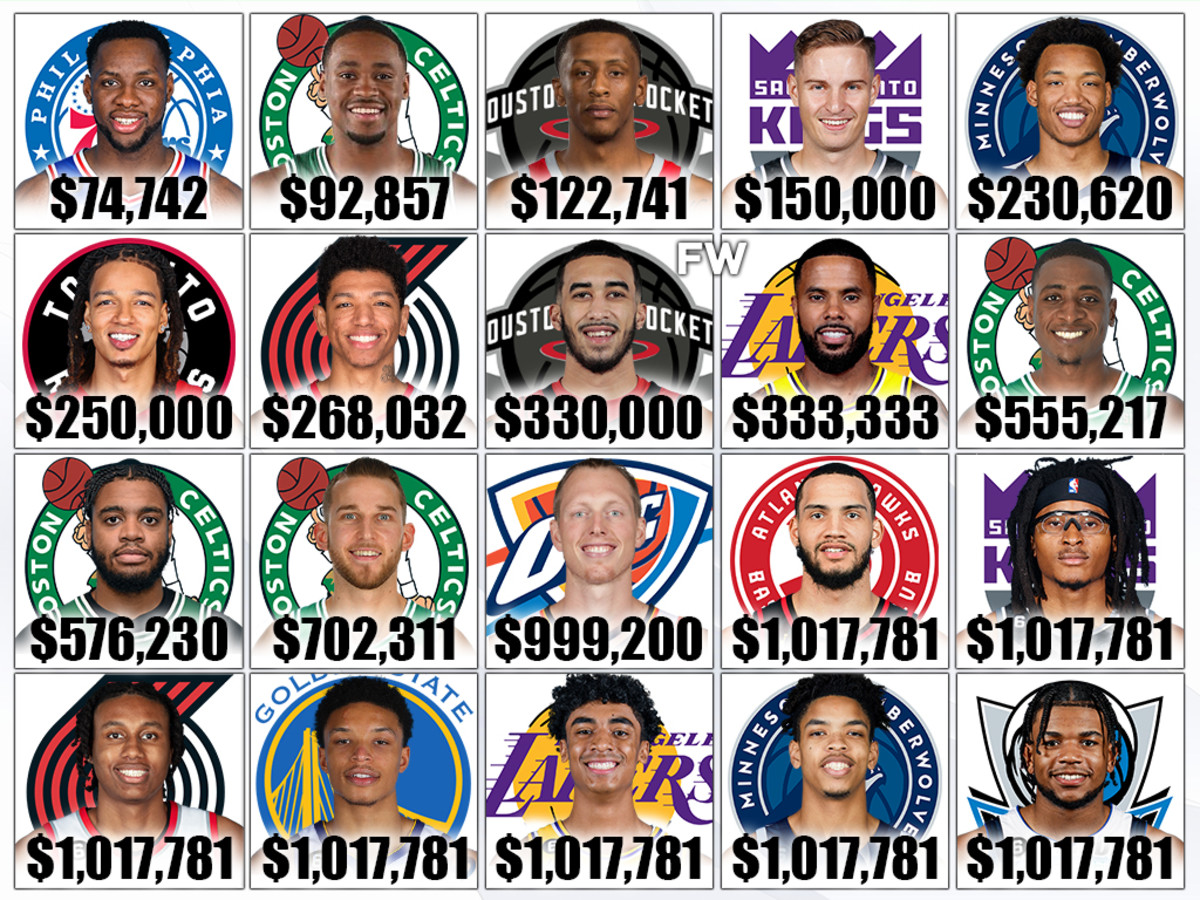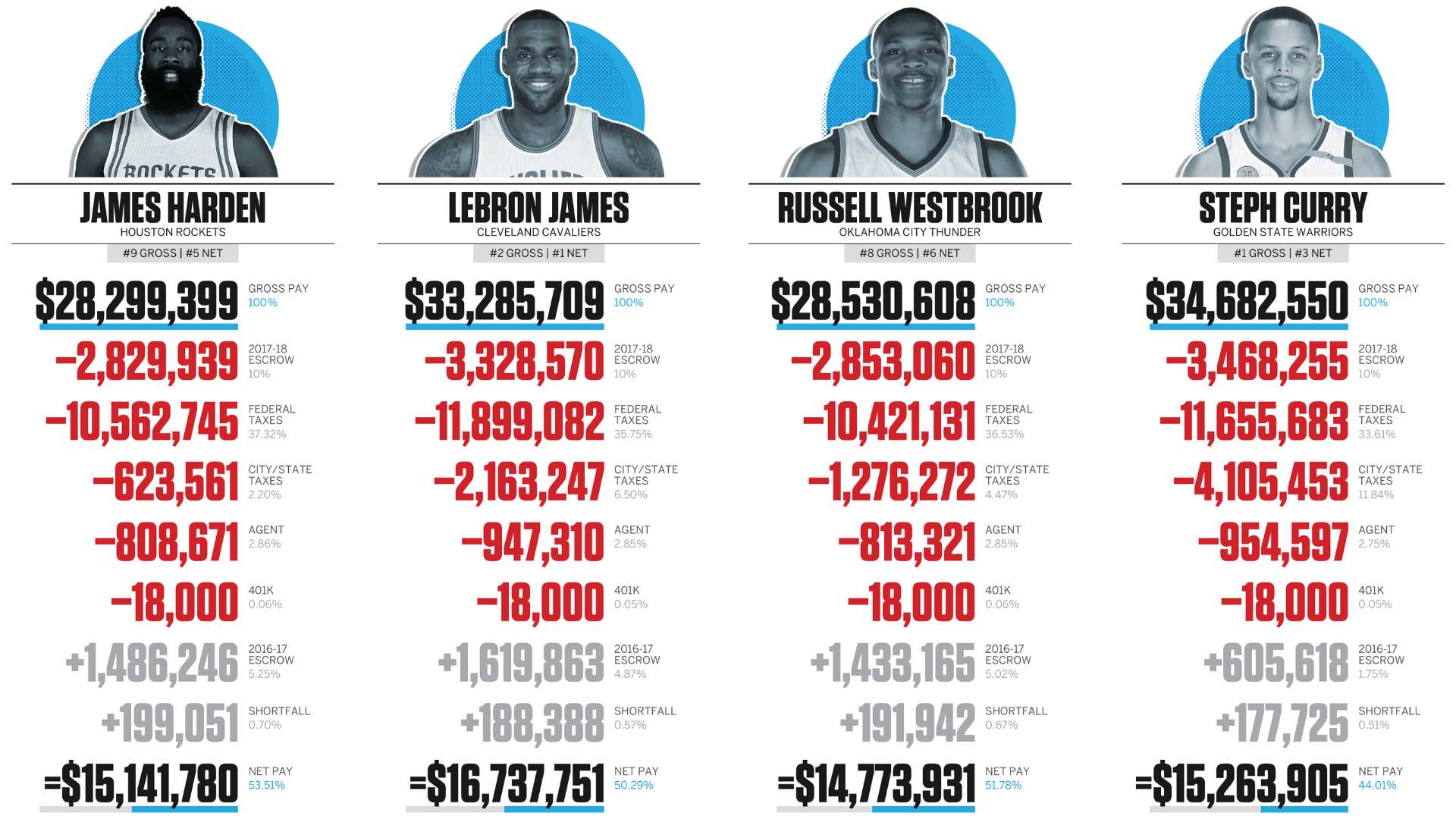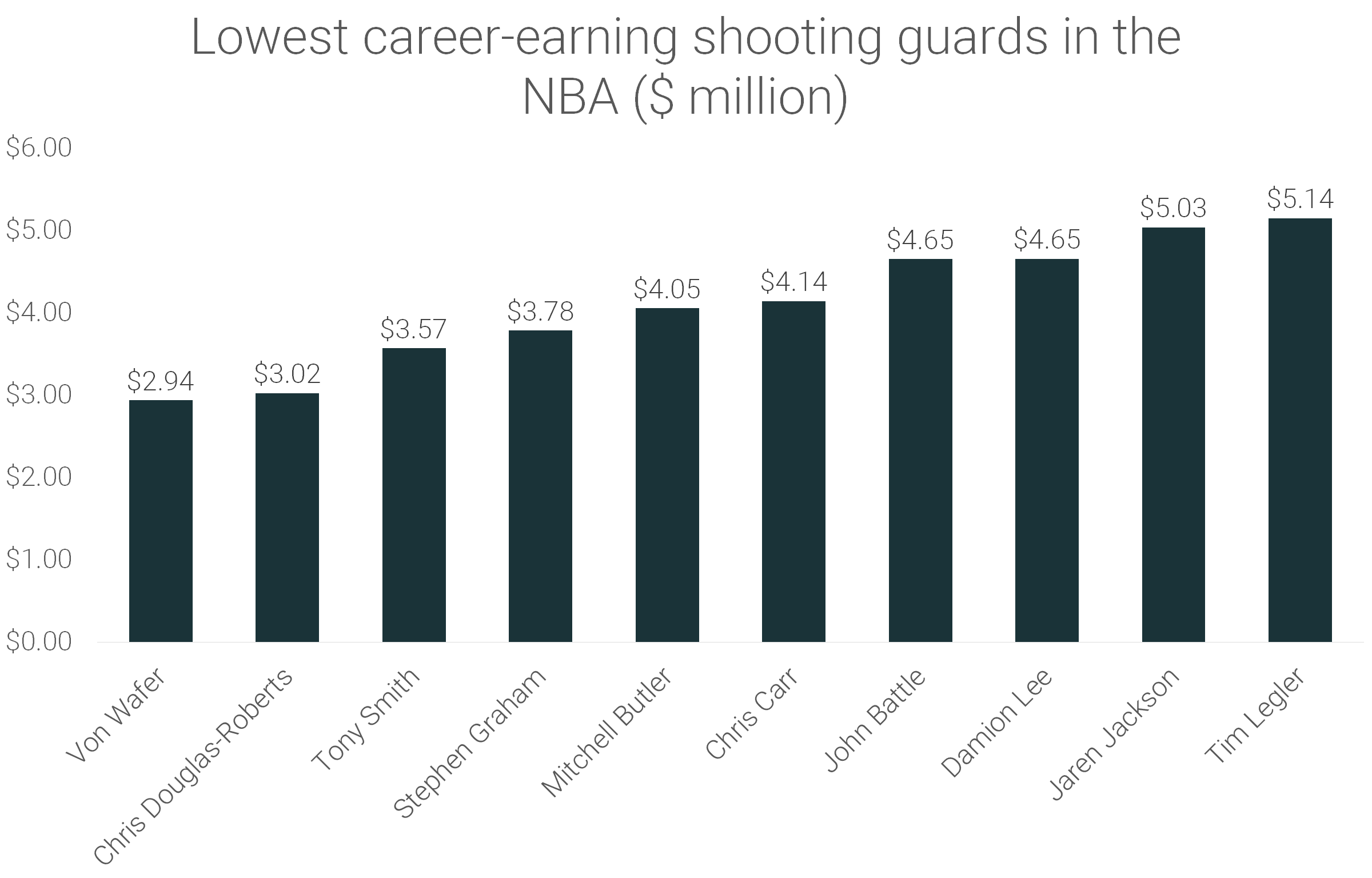What Is The Lowest Salary In The NBA? Understanding The Baseline
Have you ever wondered about the financial side of professional basketball, especially for those players not making headlines with massive contracts? It's easy to get caught up in the glitz and glamour of multi-million dollar deals, but what about the folks at the other end of the spectrum? What is the lowest salary in the NBA, anyway? This question, you know, really gets to the core of how the league operates financially, showing the absolute baseline for player earnings.
When we talk about the "lowest" in any context, it often brings to mind a foundational level, a starting point from which everything else builds. In the NBA, this concept of a "lowest" salary is, arguably, a bit like a lowest common denominator in mathematics; it's the smallest shared amount that applies across a certain group of players, a kind of essential minimum that allows the whole system to function. It's the absolute floor, the minimal amount a player can earn, even if they're just starting out or fighting for a spot on a roster.
So, we're going to explore what that bottom line looks like. We'll look at the different kinds of minimums, how experience plays a part, and what factors actually influence these figures. It's a fascinating look at the financial structure of one of the world's most exciting sports leagues, and you might be surprised by some of the details, too it's almost a different world from the superstar deals.
Table of Contents
- The NBA Minimum Salary: A Foundational Figure
- Factors Influencing the "Lowest" Pay
- Beyond the Base: What Players Really Take Home
- The "Lowest" in Context: More Than Just a Number
The NBA Minimum Salary: A Foundational Figure
The National Basketball Association, like any major professional sports league, operates under a collective bargaining agreement (CBA) between the players' association and the team owners. This agreement, you know, sets out all the rules for player contracts, trades, and, very importantly, salaries. Within this framework, a minimum salary scale is established, ensuring that no player falls below a certain earning threshold, which is, in some respects, the least amount one can earn.
How the Minimum Salary Works
The NBA minimum salary isn't just one fixed number for everyone. Instead, it's a sliding scale, adjusted each season based on the league's overall revenue and, more significantly, a player's years of experience in the league. This means, essentially, that a player with ten years of experience will have a much higher minimum salary than a rookie just stepping onto the court. It's a system designed to reward longevity and, perhaps, the wisdom that comes with time in the game, so to speak.
For instance, for the 2023-2024 season, the minimum salary for a player with no prior NBA experience was around $1.12 million. This figure, you know, represents the absolute floor for a new player. On the other hand, a seasoned veteran with ten or more years under their belt could command a minimum salary closer to $3.19 million for the same season. It's a pretty big difference, actually, highlighting how experience is valued.
Teams are, by the way, often keen to sign veterans to these minimum deals because a significant portion of the veteran minimum salary is reimbursed by the league, which makes it a bit of a bargain for teams looking to add experienced talent without heavily impacting their salary cap. It's a clever way to keep older players in the league and, well, offer teams a bit of flexibility.
Rookie Minimums: Starting Small
For a player fresh out of college or from an international league, the NBA minimum salary is their entry point. This is the lowest amount a team can pay an undrafted rookie or a player on a standard contract for their first year. It's a minimal cost for teams, you might say, to bring in new talent, and for the player, it's the initial step on a potentially very lucrative path. This amount, very typically, increases with each passing season if they remain in the league.
These rookie minimums are, essentially, the baseline for those just beginning their professional basketball journey. They are, in a way, the "lowest common denominator" for new entrants, the financial floor for every player hoping to make their mark. It's a starting point that, you know, can feel quite substantial compared to many other professions, but it's still the absolute bottom in the NBA.
Veteran Minimums: Experience Counts
As players accumulate years of service, their minimum salary increases. This is where the sliding scale truly comes into play. A player with, say, five years of experience will have a higher minimum than someone with two years, and so on, right up to the ten-year mark. This system, by the way, provides a safety net for players who might not be star-level but are still valuable contributors with years of wisdom and skill.
Teams often sign veteran players to these minimum deals for a variety of reasons. They might be looking for leadership, specific skill sets, or simply reliable depth on the bench. The fact that the league helps cover a portion of these salaries makes it an attractive option for teams trying to manage their cap space effectively. It's a win-win, really, for both the experienced player and the team, so to speak.
What About 10-Day Contracts and Two-Way Deals?
Beyond the standard minimum contracts, there are a couple of other ways players can earn money at the lower end of the salary scale. These are, in a way, even more "minimal" in terms of commitment and immediate earnings, but they offer crucial opportunities. A 10-day contract, for instance, is a short-term agreement that allows a team to evaluate a player or fill a temporary roster spot due to injuries. The pay for these contracts is prorated based on the player's experience-based minimum salary for the full season.
Two-way contracts, on the other hand, are a relatively newer addition, allowing teams to sign players who can split their time between the NBA team and its G-League affiliate. These contracts have their own separate salary structure, which is significantly lower than the NBA minimum. For the 2023-2024 season, a two-way player earned a flat rate of around $559,780, regardless of experience. This is, you know, a very different kind of "lowest" salary, as it bridges the gap between the G-League and the main NBA roster, offering a pathway for players to develop and potentially earn a full NBA contract down the line.
Factors Influencing the "Lowest" Pay
While the minimum salary scale provides a clear framework, several other elements can influence what a player actually earns, especially at the lower end of the spectrum. These factors, you know, create a bit of a dynamic environment around even the most basic contracts.
Years of Experience: A Key Variable
As we've touched upon, a player's tenure in the league is the single biggest determinant of their minimum salary. This isn't just about how long they've been playing, but specifically how many "years of service" they have accumulated, which is defined by the CBA. A player earns a year of service if they are on an NBA roster for a certain number of days during a season. This system, you know, ensures that players are rewarded for their time and dedication to the game, even if their roles are not always prominent.
It's a straightforward system, really, that sets a clear progression for what the "lowest" possible salary could be for any given player. So, a rookie has the absolute lowest minimum, and that figure gradually climbs with each season they spend in the league. It's, basically, a structured way to acknowledge their professional journey.
Team Salary Cap: A Balancing Act
Every NBA team operates under a salary cap, which is the maximum amount of money they can spend on player salaries in a given season. While the minimum salaries are, well, relatively small compared to max contracts, they still count towards a team's cap space. Teams often use minimum contracts to fill out their roster, especially when they are close to or over the salary cap. This is where the league's reimbursement for veteran minimums becomes very helpful, as it reduces the actual cap hit for the team.
The interplay between minimum salaries and the salary cap is, you know, a constant balancing act for general managers. They need to find valuable players at the lowest possible cost to stay competitive, especially if they have a few superstar contracts already on the books. It's about finding the "minimal risk" additions that can still contribute to winning, you might say.
Waivers and Buyouts: Unexpected Paths
Sometimes, a player might sign a contract for more than the minimum, but then get waived (released) by their team. If they are then picked up by another team, their new contract might be for the minimum salary, especially if they are looking for a new opportunity quickly. Similarly, buyouts, where a player and team agree to part ways with the player giving up some of their remaining salary, can lead to a player signing for the minimum with a new team, often a contender. These situations, you know, can create interesting scenarios for players seeking a fresh start.
These scenarios represent a different kind of "lowest" salary; it's not necessarily the lowest they *could* earn, but the lowest they *do* earn after a contract change. It's a practical reality of the business side of basketball, where players sometimes take a lower salary to join a team that offers a better fit or a chance at a championship, so to speak.
Beyond the Base: What Players Really Take Home
When we talk about "the lowest salary," it's important to remember that the announced figure is the gross amount. What a player actually puts in their bank account is, very often, quite a bit less after various deductions. This is a reality for everyone, but it's especially noticeable when the starting figure is already at the "lowest" end.
Taxes and Agent Fees: The Deductions
NBA players, like any high-earning individuals, face significant tax burdens. This includes federal income tax, state income tax (which varies greatly depending on the team's location), and sometimes even city taxes. These taxes, you know, can take a very substantial bite out of their gross salary. For instance, a player in California will pay a higher state income tax than one in Florida, which has no state income tax. This can, basically, make a real difference to their net earnings.
On top of taxes, most players employ an agent, who typically charges a commission of around 2% to 4% of the player's salary. This fee, you know, covers contract negotiations, marketing deals, and career guidance. While it's a necessary cost for many, it's another deduction from that "lowest" salary figure. So, the take-home pay is, actually, a lot less than the announced number.
Benefits and Perks: The Hidden Value
It's not all deductions, though. NBA players, even those on minimum contracts, receive a comprehensive benefits package as part of the collective bargaining agreement. This includes health insurance, a generous pension plan, and various other perks. These benefits, you know, represent a significant value that isn't reflected in the salary figure itself. They provide a crucial safety net and long-term financial security that many professions simply don't offer.
For instance, the NBA's pension plan is, arguably, one of the best in professional sports, providing substantial retirement income for players who meet certain service requirements. This "hidden value" means that even the "lowest" paid NBA player is, in some respects, receiving a package that goes well beyond just their salary. It's a pretty good deal, really, when you consider the whole picture.
The "Lowest" in Context: More Than Just a Number
Thinking about "what is the lowest salary in the NBA?" isn't just about a numerical value; it's about understanding the foundational economics of a major sports league. It's the "lowest common denominator" that all players, from rookies to seasoned veterans, eventually encounter, whether as a starting point or a fallback option. This minimum, you know, ensures a certain level of financial stability for players in a highly competitive and often unpredictable career.
It's also, arguably, a counterintuitive aspect of a "high-level" professional sport. You might think everyone is making millions upon millions, but the reality is that the "low level" of salaries still exists, providing a baseline that, well, allows for player movement and team building. The minimum salary is, in a way, the "minimal cost" for a team to bring in talent, and it's the "minimal risk" for a player trying to establish themselves or extend their career.
Even at the "lowest" end, NBA salaries are, you know, very substantial compared to most other jobs. But within the context of professional basketball, these figures represent the absolute floor. They are the essential building blocks upon which the league's entire financial structure rests, allowing teams to field rosters and players to pursue their dreams, even if they aren't the biggest stars. It's a fascinating look at the economic reality of the game, and how even the "fewest" dollars can mean a lot in the grand scheme of things, you know.
Frequently Asked Questions
What is the minimum salary for an NBA rookie?
For the 2023-2024 NBA season, the minimum salary for a rookie with no prior NBA experience was around $1.12 million. This figure, you know, serves as the absolute base for players just entering the league on a standard contract.
Does the NBA minimum salary change based on experience?
Yes, it absolutely does. The NBA minimum salary operates on a sliding scale, meaning it increases significantly based on a player's years of experience in the league. A veteran with ten or more years of service, for instance, earns a much higher minimum than a first-year player, you know, reflecting their accumulated time in the game.
Can NBA players make less than the minimum salary?
Generally, no, not on a standard NBA contract. However, players on two-way contracts, which allow them to split time between an NBA team and its G-League affiliate, do earn a lower flat rate than the standard NBA minimum. Also, players on 10-day contracts earn a prorated portion of the minimum, so their immediate earnings are lower, but it's still based on the minimum scale, you know.
To learn more about NBA contracts and player earnings on our site, and also check out our insights into team salary cap management for more details.
- Maal49com
- What Is Wrong With Peter Doocys Wife
- Peter Doocy First Wife
- Hyungry Temporary Replacement 3
- Sone436

20 Lowest Paid NBA Players For The 2022-23 Season - Fadeaway World

Nba League Minimum Salary 2025 Player - Adel Stone

Lowest paid NBA players (1991-2022) | RunRepeat